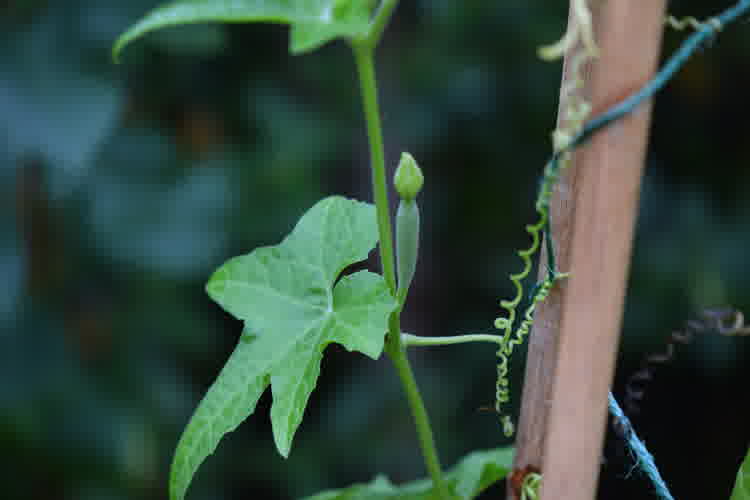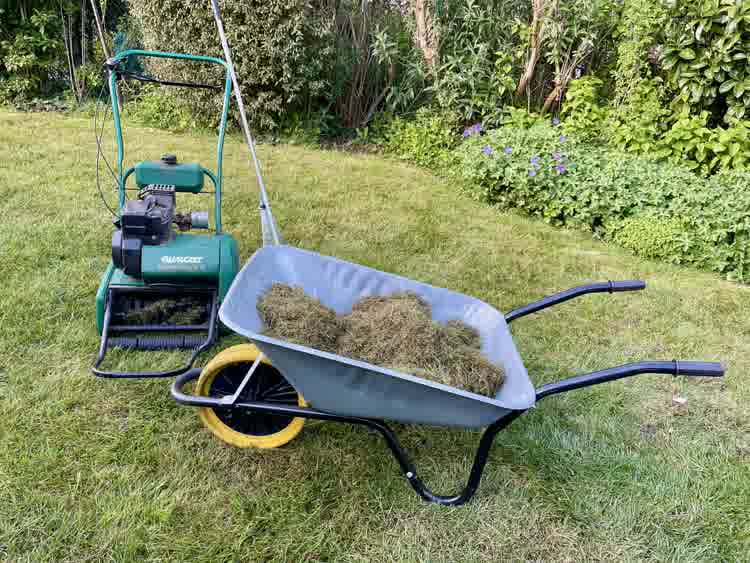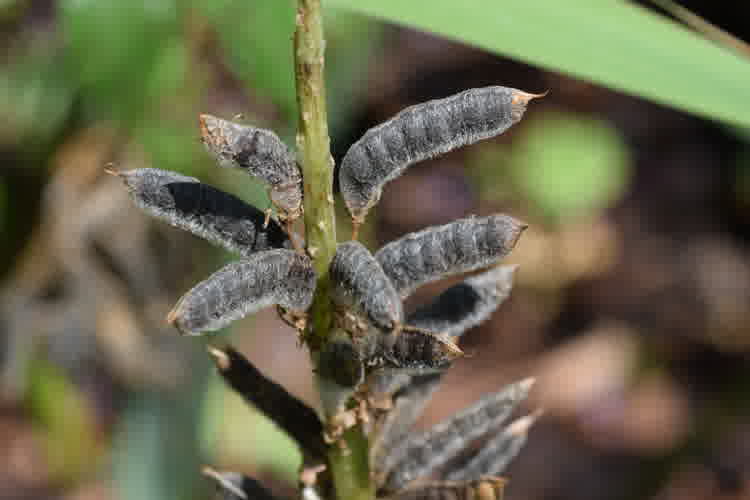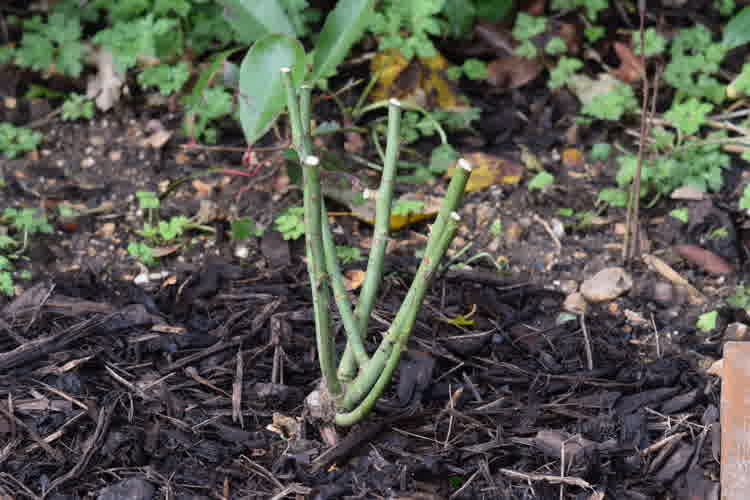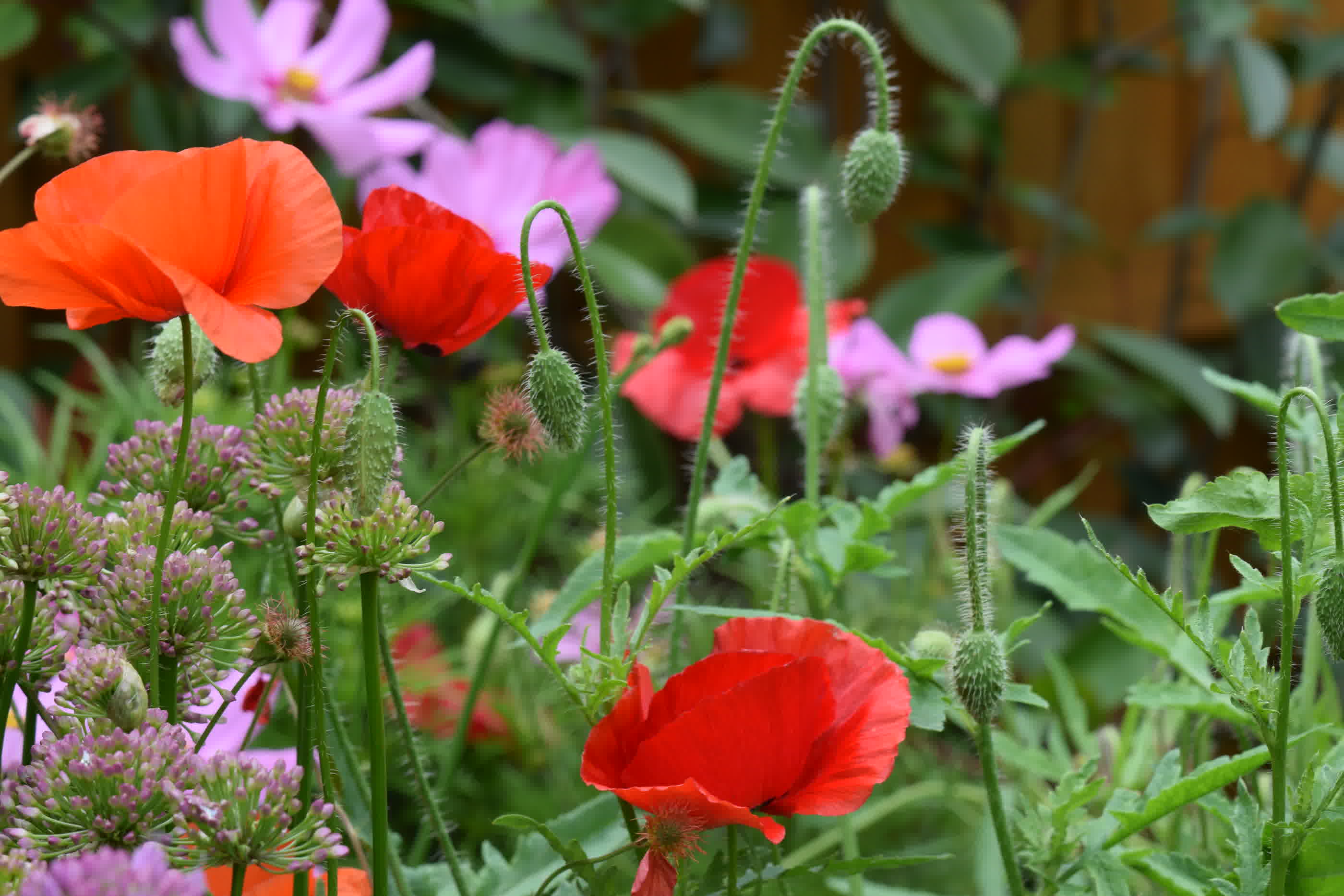
Poppies
Table of Contents
Varieties
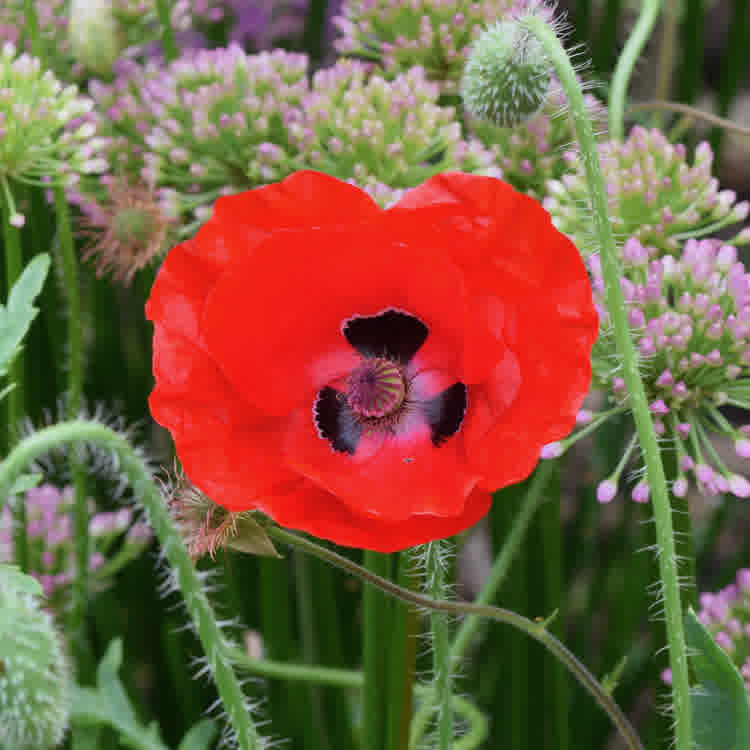
When it comes to poppies, most of us picture the common red poppy. However, poppies vary in colour, size and appearance.
Poppies range in colours from red, white, yellow, orange, pink and purple.
Some poppies have solid-coloured petals, such as the common poppy, while others poppies will have patterns on their petals, such as oriental poppies.
The lifespan of poppies differs between varieties. Some are annuals, others are biennials, and some are perennials.
Most poppies are hardy plants.
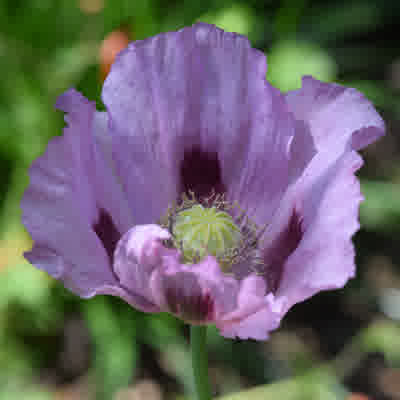
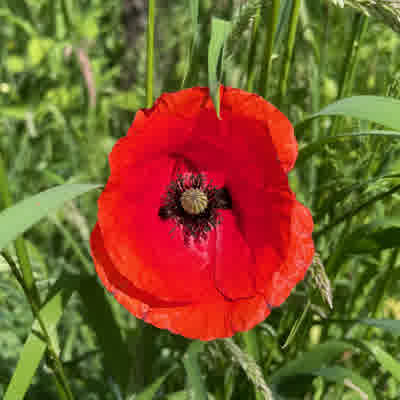
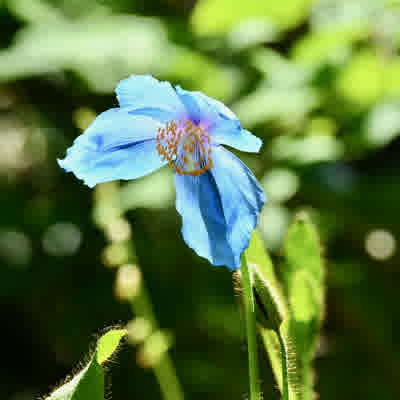
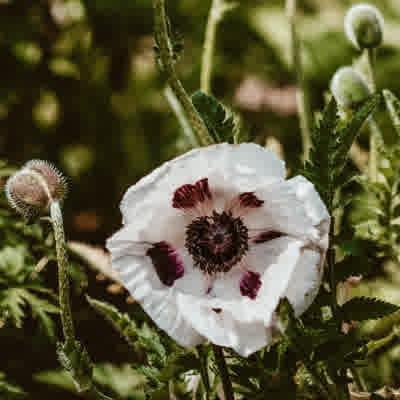
Planting
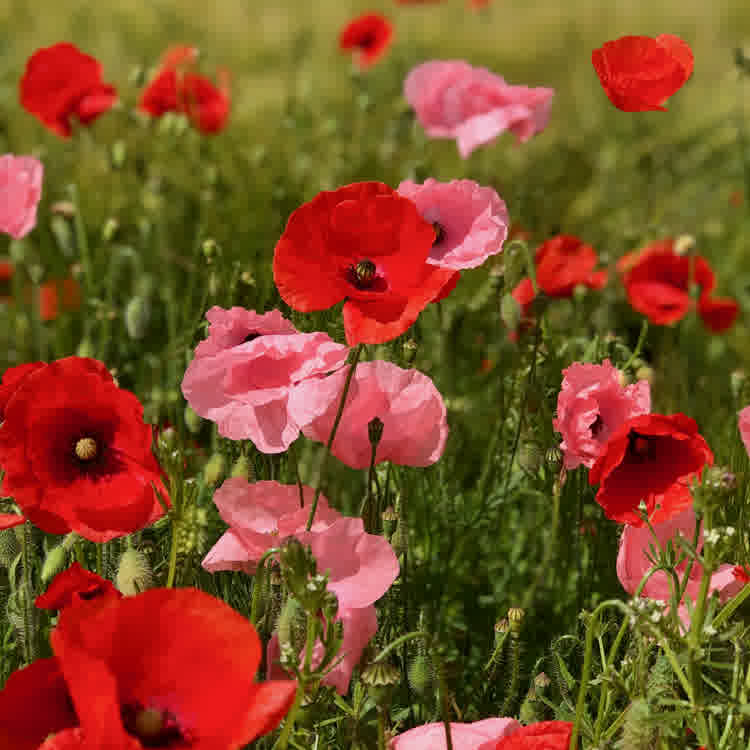
Poppies generally tolerate multiple growing conditions, although, for best results, plant poppies in full sun with well-draining soil. Poppies will tolerate most soil pH ranges and soil compositions.
Himalayan poppies are an exception as they will prefer partial shade and are not so tolerant of alkaline soils.
Poppies suit a variety of locations, including flower beds and borders, and the annual common poppy makes a great addition to wildflower gardens and meadows.
Poppies are relatively easy to plant.
The first step is to prepare the ground.
Remove all weeds from the ground and loosen the soil by turning it over. Then level the seed bed by raking over it.
Before sowing the seed, water the seed bed to moisten the soil.
Sprinkle the seeds over the soil and firm in gently with your foot.
There is no need to cover the seeds with soil.
Dig a hole as deep and slightly wider than the container.
Remove the plant from its container and place it in the hole. Backfill the hole, firm the plant in and water.
Ongoing care
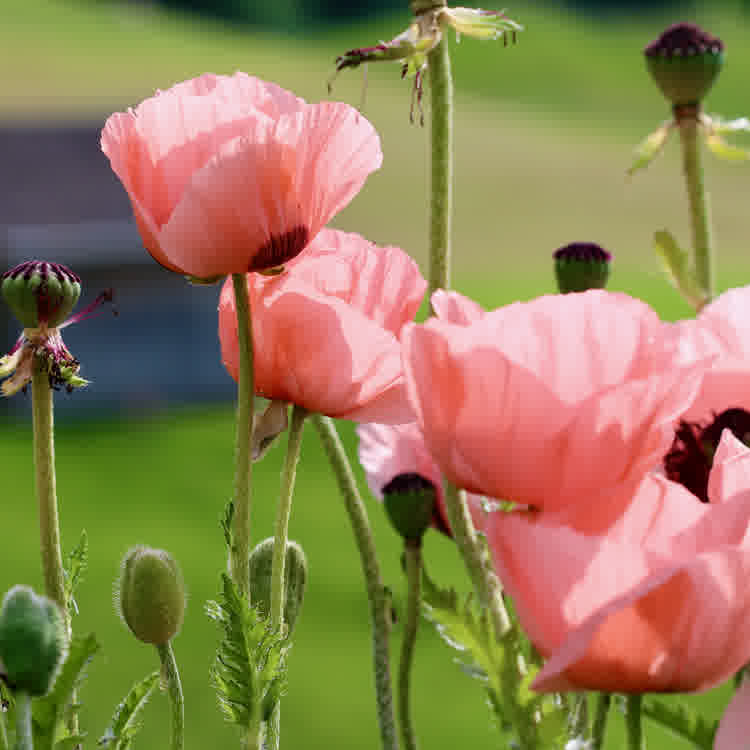
Poppies are very easy to look after, requiring little maintenance.
Annual poppies, such as the common poppy, can mostly be left to their own accord. Keep on top of weeds, removing any growing in the area.
Annual poppies do not require deadheading. This allows them to self-seed, resulting in new plants the following year.
Perennial poppies, such as oriental poppies and Himalayan poppies, can be deadheaded once their flowers begin to fade. This should result in the plant producing a second flush of flowers.
Establised poppies are drought tolerant and shouldn't require frequent watering. Water during sustained periods without rain where the soil has become very dry.
Poppy seeds can remain dormant in the ground for many years. They are triggered to germinate when the soil is disturbed.
Pest and diseases
Poppies are usually problem free and are unlikely to succumb to pests or diseases. However, as with all plants, problems can arise.
Pests
Aphids are commonly known as greenfly or blackfly. They are small sap-sucking insects which feed on plants. Regularly inspect your poppies for aphids. Aphids can typically be removed from poppies by hand, wiping them away, without resulting in chemical control.
Diseases
Powdery mildew is a fungal disease.
It can be identified through white, powdery growth on the foliage and stems. Inspect your poppies regularly and remove and destroy any affected areas of the plant.
